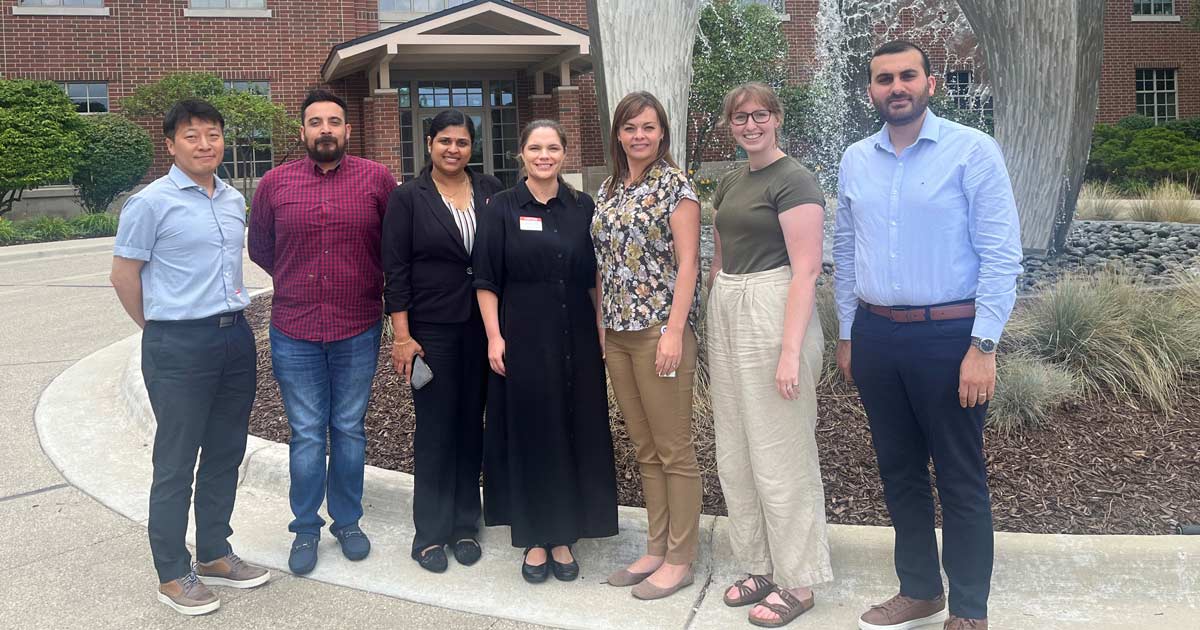An updated version of the Integrated Chemical Environment (ICE) will be released on Sept. 6. ICE provides data, chemical lists, and computational tools to help develop, assess, and interpret new approaches for assessing the safety of chemicals without the use of animal testing.
“These updates add resources that reflect our users’ current research interests,” noted Nicole Kleinstreuer, Ph.D., director of the National Toxicology Program (NTP) Interagency Center for the Evaluation of Alternative Toxicological Methods (NICEATM), which supports ICE. “We’ve also improved the support provided for the ICE tools and the interactivity between ICE and other databases.”
NICEATM is expanding its outreach efforts to raise awareness of ICE and broaden the impact of this resource. ICE users have received tailored training from NICEATM developers at several events held earlier this year, and more events are planned for the fall.
Updates reflect current research interests
NICEATM first released ICE in 2017 to address the needs of individuals interested in chemical safety testing for regulatory applications. Typical users include scientists who develop in vitro or computational methods for predicting chemical toxicity, investigate mechanisms of toxicity, or use toxicity data to establish workplace and environmental exposure limits for chemicals.
Chemical Quick Lists are a unique feature of ICE that can help new users explore data of interest. These are lists of chemicals that have been linked to endocrine interactivity, eye and skin irritation, or skin sensitization. The new release adds a Chemical Quick List for a group of chemicals called PFAS and expands the Chemical Quick Lists available for exploring potentially carcinogenic chemicals.
“There’s a lot of interest in PFAS right now,” noted Aswani Unnikrishnan, a member of the ICE developer team. “We’re hoping the availability of this Chemical Quick List will encourage people to explore nonanimal approaches to characterize PFAS toxicity.”
National and international outreach
ICE tools can predict pharmacokinetic activity of a chemical in different species or put data from in vitro assays into the context of predicted human exposure to the chemical. Other tools allow users to explore and compare chemical properties and understand how chemicals are used in products.
Unnikrishnan and other scientists with Inotiv, the contractor supporting NICEATM, have been helping the ICE user community explore how to better use the resource. A May session presented at the National Institutes of Health (NIH) in Bethesda, Maryland provided training to 15 scientists from member agencies of the U.S. Federal Interagency Coordinating Committee on the Validation of Alternative Methods (ICCVAM).
Participants at the May training were captivated and asked NICEATM to organize future sessions tailored to the concerns of specific agencies. Materials from the May training are available on the NTP website.
More recently, NICEATM provided training for the public health nonprofit NSF International at their world headquarters in Ann Arbor, Michigan. NSF scientists based in Ann Arbor and regulators from South Korea learned how to use ICE resources to explore their interest in assessing human health risk for chemicals found in drinking water.
“We recorded the training, and a Korean transcript was made of the recording,” noted Inotiv scientist Bridgett Hill, who was one of the trainers. “We’re hoping efforts like these increase the exposure to and use of ICE internationally.”
On August 30, Unnikrishnan trained attendees of the 2024 OpenTox Summer School on ICE. An ICE demonstration is also planned for the October meeting of the International Collaboration on Cosmetics Safety.
(Catherine Sprankle is a communications specialist for Inotiv, the contractor supporting NICEATM.)
Source link
factor.niehs.nih.gov


